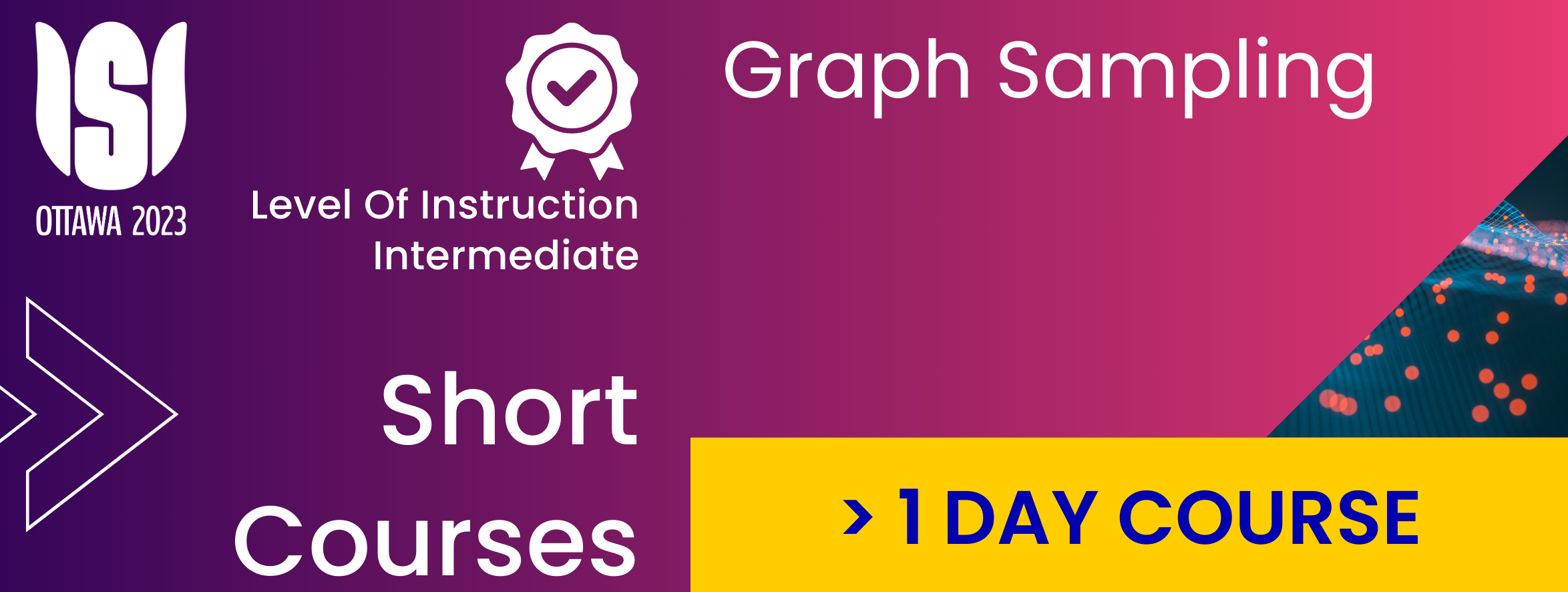
For more details on registrations and submissions for the Graph Sampling, please first login to your account. If you do not have an account then you can create one below:
Please note: registration is now closed. You can still create an account for future updates.
Login to your account Create accountMany technological, socio-economic, biological phenomena exhibit a graph structure that may be the central interest of study, or the edges may provide effectively access to those nodes that are the primary targets. Either way, graph sampling is a statistical approach to study real graphs, which is universally applicable based on exploring the variation over all possible subgraphs that can be taken from the given population graph, according to a specified method of sampling, irrespectively of the unknown properties of the target population graph.
Graph sampling encompasses the established theory of finite population sampling, because any latter situation can be represented as a special case of the former. All the so-called “unconventional” finite population sampling techniques, such as indirect, network, adaptive cluster or line-intercept sampling, can be more effectively studied as special cases of graph sampling. Whereas snowball sampling and various random walk sampling yield respectively breadth-first or depth-first observations in genuine graph problems. The course provides an introduction to the central concepts of graph sampling, the most common sampling methods, and the construction of graph sampling strategy. A wide range of application areas are illustrated, such as epidemiological studies, environmental and spatial statistics, network function learning, graph embedding.
In-Person Event. Location Of Short Courses: University of Ottawa
Graduate students, statisticians working with sampling methods, data scientists interested in network analysis, graph mining or compression.
Level Of Instruction: Intermediate
Understanding the central concepts of graph sampling and estimation Strategies.
Estimation of graph parameters by breadth-first snowball sampling, which is based on the known sampling probabilities.
Depth-first random walk sampling from arbitrary simple graphs with desired stationary probabilities and adjustable chain mixing speed
Illustration of a wide range of application areas and topics
Zhang, L.-C. (2022). Graph Sampling. Chapman and Hall/CRC.
Lectures, Q&A
Affiliations: University of Southampton, UK; Statistics Norway, Norway
For more details on registrations and submissions for the Graph Sampling, please first login to your account. If you do not have an account then you can create one below:
Please note: registration is now closed. You can still create an account for future updates.
Login to your account Create accountWe have placed cookies on your device to help make this website better.
You can change your cookie settings in your web browser. Otherwise, we’ll assume you’re OK to continue.
Some of the cookies we use are essential for the site to work.
We also use some non-essential cookies to collect information for making reports and to help us improve the site. The cookies collect information in an anonymous form.
To control third party cookies, you can also adjust your browser settings.
Do Not Accept Third Party Cookies